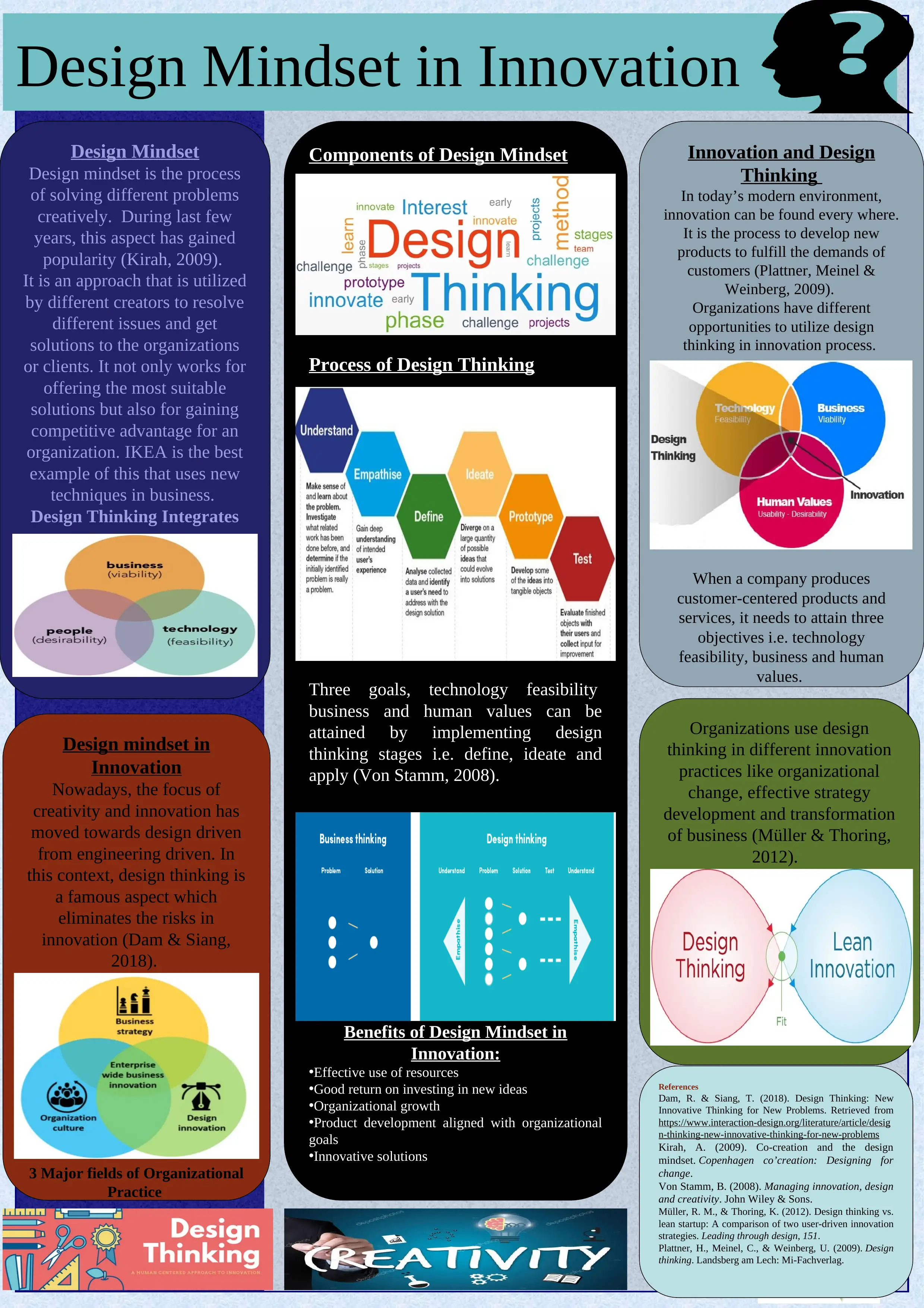Masters Project: Design Mindset in Innovation for MGMT20140
VerifiedAdded on 2023/06/10
|1
|449
|72
Project
AI Summary
This project delves into the concept of design mindset within the context of innovation, focusing on its processes, benefits, and practical applications. It examines how design thinking integrates with the design mindset to foster innovation, emphasizing its role in addressing complex problems creatively. The project outlines the key components of the design thinking process, including defining, ideating, and applying solutions to achieve technological feasibility, business value, and human-centered outcomes. Furthermore, it highlights the use of design thinking in organizational practices, such as organizational change, strategy development, and business transformation. The project also identifies the benefits of adopting a design mindset, including efficient resource use, return on investment, organizational growth, and the alignment of product development with organizational goals. The project uses academic sources to support its claims and demonstrates a comprehensive understanding of the subject matter.

![[object Object]](/_next/static/media/star-bottom.7253800d.svg)